In Brazil’s Rio de Janeiro, one trauma center has become known as the war hospital
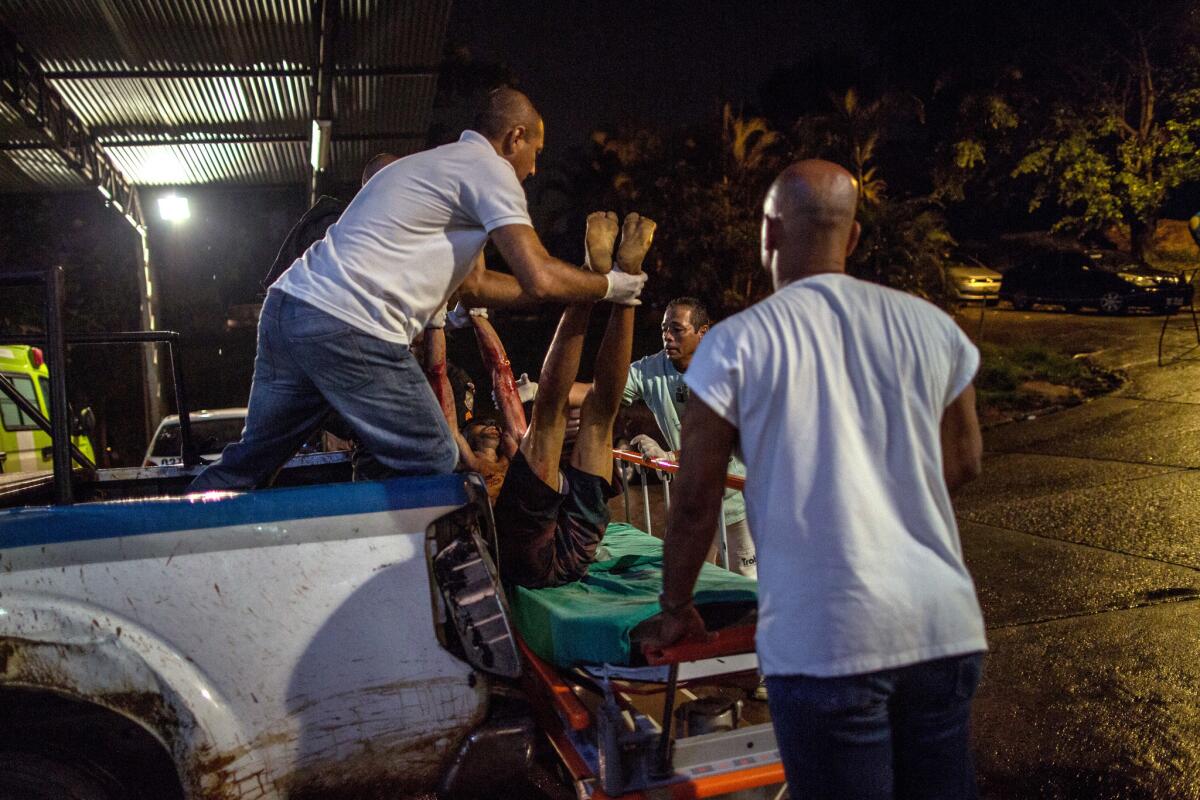
One man lay sprawled out in the back of a Brazilian military police officer’s pickup truck, the back of his T-shirt soaked with blood and pierced by bullets.
The blood-smeared body of another man pressed against him. Blood leaked through the truck’s closed tailgate, dripping onto the pavement.
“We need some help here!” two police officers called to staff members outside Nova Iguacu General Hospital in Rio de Janeiro state this month.
At this hospital outside the city of Rio de Janeiro, which has seen a drastic uptick in gunshot victims during the last five years, the response to persistent violence in the region has become a mixture of urgency and apathy. Some residents, having seen family and friends hurt by violent crime, at times can’t help showing their anger, or satisfaction when suspected criminals become the ones urgently in need of care.
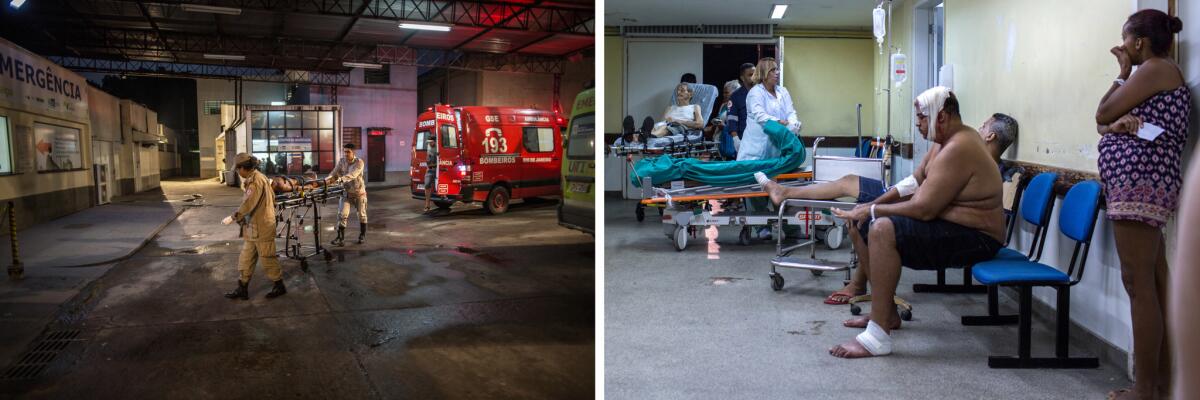
As two hospital orderlies walked over to the military truck, placed the bloody men on stretchers and headed toward the doors of the trauma center, a crowd stood outside the hospital awaiting word on their loved ones. No one seemed to know the two men.
A woman at the front of the crowd crossed her arms as she glanced over her shoulder at them.
“Good,” she says. “That’s two more thugs we don’t have to worry will rob and kill us.”
Other people in the crowd nodded without saying anything.
Nova Iguacu General Hospital, or HGNI, last year treated 687 people who had been shot, up from 475 the previous year, dozens of them fatalities. As of mid-March, the trauma center known as Rio’s war hospital had treated 159 shooting victims this year, including 31 who died of their wounds, putting it on track to surpass last year’s total if the violence does not ease.
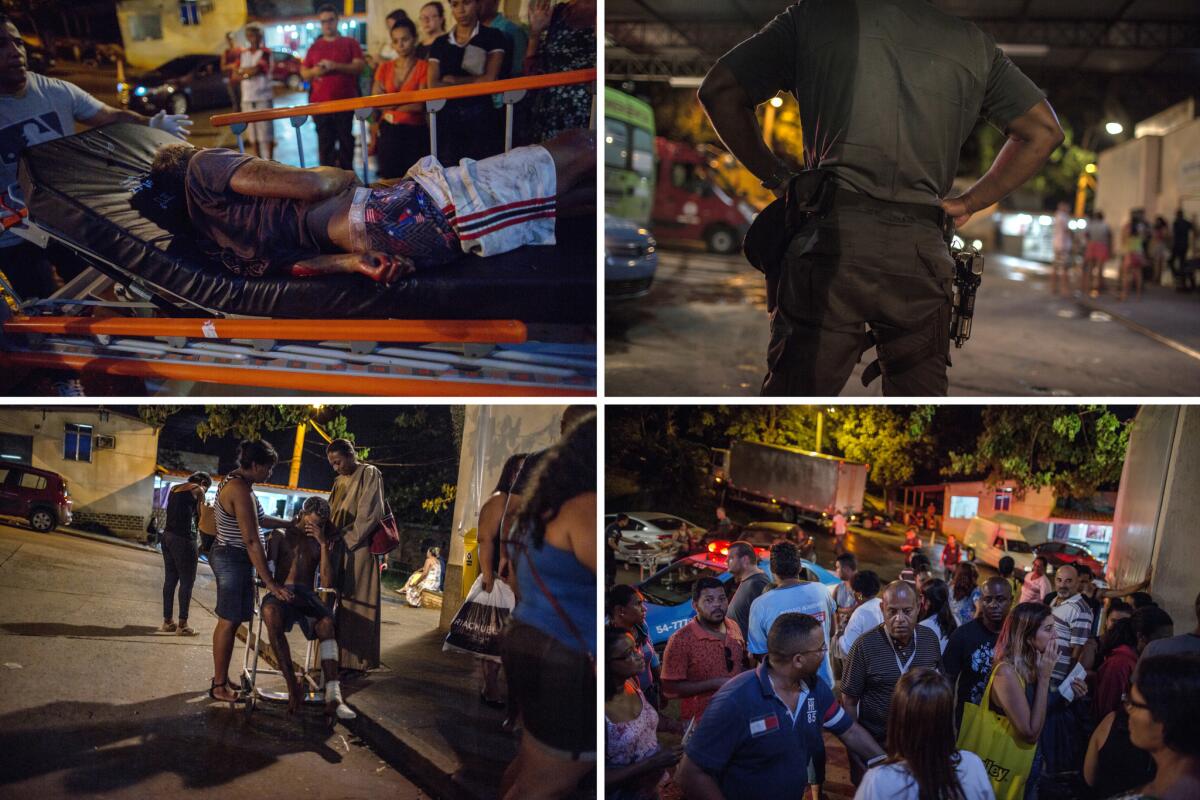
The hospital is responsible for patients from 13 municipalities in a region known as the Baixada Fluminense. The region, which is home to about 3 million people, has two hospitals, including HGNI, that treat trauma patients.
State authorities have struggled to ensure public safety. Daily shootouts between police and suspects, generally linked to drug trafficking, recently led the federal government to intervene, putting troops on the streets and handing control of the state’s public security to an army general.
The government’s Public Security Institute registered 6,731 homicides in the state of Rio de Janeiro in 2017, the highest number since 2009.
The hospital, administrated by the city of Nova Iguacu, receives about $1.9 million from the federal government to treat the 9,000 emergency patients who come through its doors every month. The hospital says it would cost $4.3 million to meet its needs.
On the day the officers dropped off the two men in the pickup truck, the trauma center’s nine waiting-room chairs, their blue fabric torn and stained from years of use, were occupied. Other patients stood, while some waited in wheelchairs.
The stretcher carrying one of the men passed through the middle of the waiting area. It was about 10 p.m. Nobody blinked at the sight.
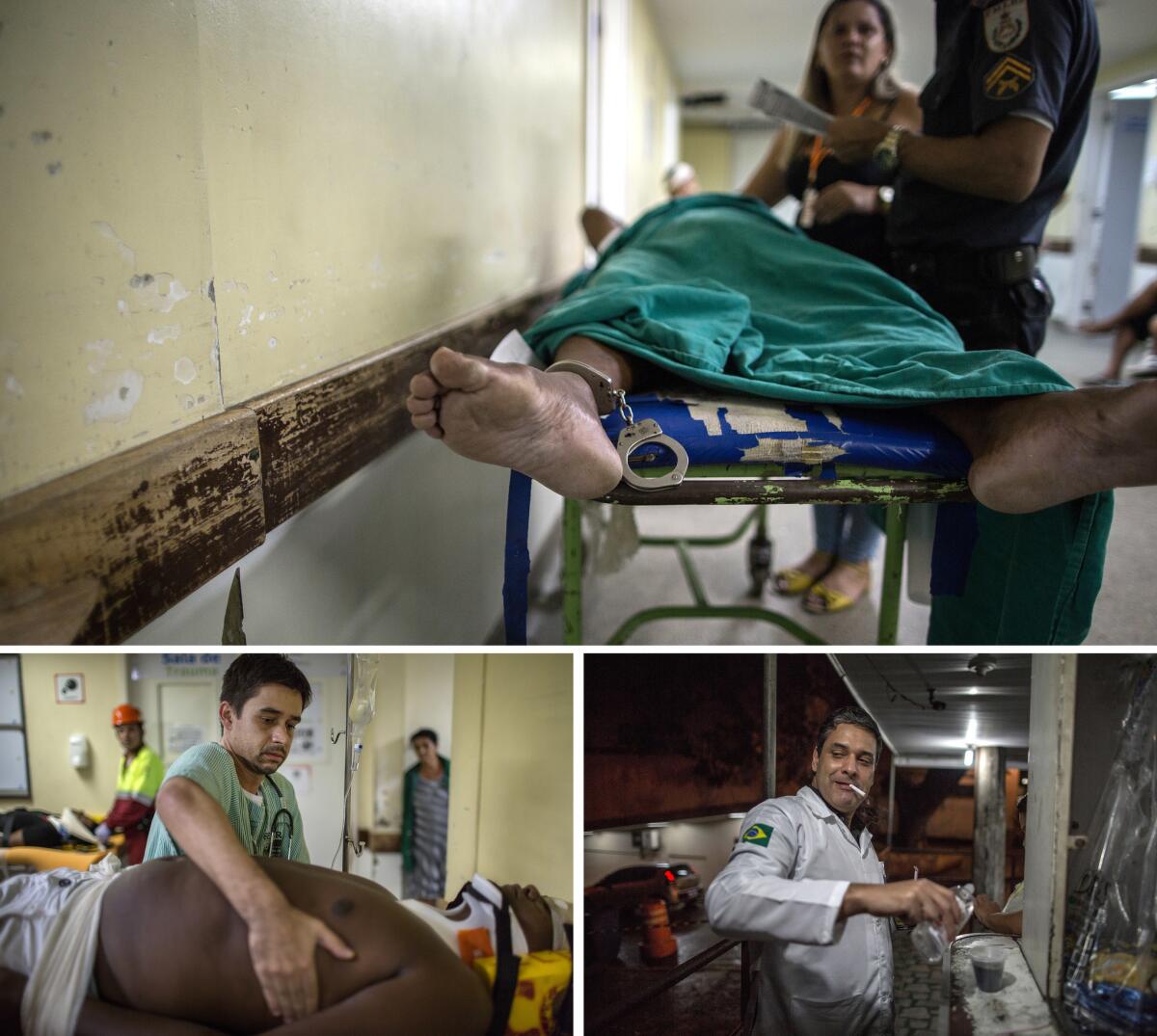
The man was rolled through another set of doors into the trauma center’s red room, meant for those in life-threatening situations. Five patients were already in beds lined up along the wall to the right. The area behind the shift supervisor’s desk in the middle of the room was full too.
“Where do you want him?” the orderly who wheeled the patient in asked Dr. Fernanda Sahione, a physician at the hospital for four years.
He stopped the stretcher at the foot of the five beds to the right as a screen of thin teal fabric was hung from metal poles to separate the shooting victim from the other patients.
“Don’t worry, we can keep him here for now,” said Sahione as she took the patient’s vital signs. “He won’t be here long. He’s already dead. We just need to declare him and have the morgue pick him up.”
She moved the first stretcher over as the second one was brought in. He was dead too.
“Can we get someone to come in and clean up this blood?” said Dr. Alessandry Lopes Bastos, a vascular surgeon.
There was nothing more he could do. Bastos had been ready to take the two men to surgery. Instead, he helped place them into body bags before pulling off his gloves.
“They have IDs that say they’re 19 and 24, but they must be fake,” he said, shaking his head. “That boy can’t be more than 15 years old.”
Both victims had been shot multiple times. The officers who brought them in said they were suspected of involvement in the illegal drug trade and were killed during a shootout in a favela, or slum, known as Comunidade Sem Terra.
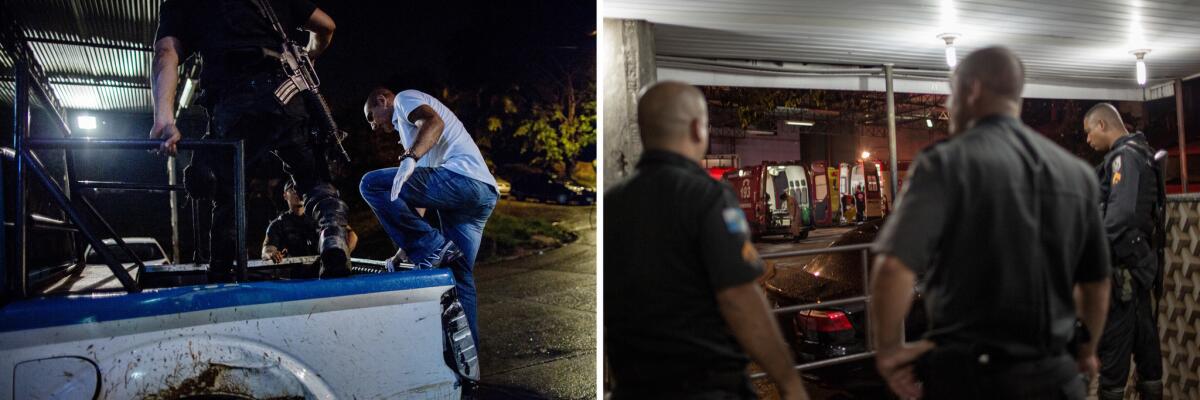
Later, in a lunch room, several half-eaten pizzas sat on a table as the 11 o’clock news aired on TV. Nobody paid attention.
Bastos took a last bite of pizza after being called into surgery — a stabbing victim this time.
Dr. Artur Ferreira, a neurosurgeon, sat on an old black couch next to Sahione.
“I’m just glad to be working at this hospital,” Ferreira said, leaning forward in his seat.
The doctors continued to chat about life at the hospital.
“This place is like cocaine for us. It’s addictive,” Sahione said. “And we’re a family here. I never want to leave.”
A short time later, Bastos smoked outside the trauma center. The surgery on the stabbing victim had been simple and went well. It took less than an hour.
Bastos flicked the ash from his cigarette.
“Life is so futile,” he said.
At 12:50 a.m., Bastos still had more than six hours remaining on his 12-hour shift.
An ambulance came up the hospital drive, its sirens blaring, and pulled to a stop. He took one last puff, put out his cigarette and headed toward it.
“Here we go again.”
Langlois is a special correspondent.
Sign up for Essential California
The most important California stories and recommendations in your inbox every morning.
You may occasionally receive promotional content from the Los Angeles Times.






